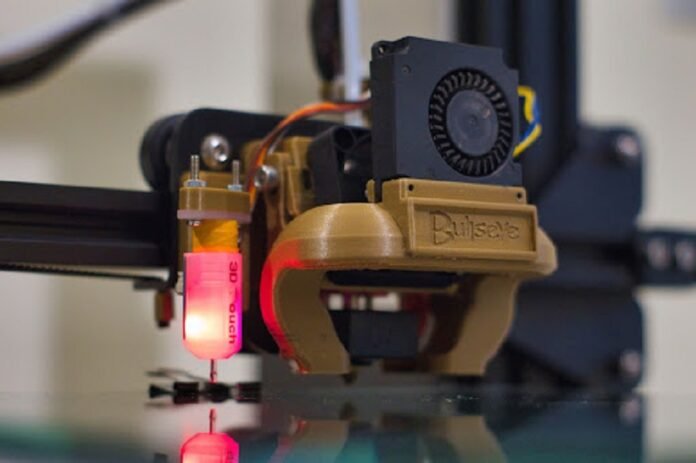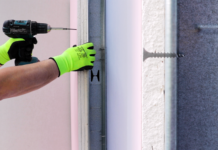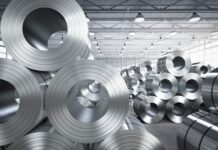3D printing has become an innovative technology in a number of sectors. 3D printing, which builds three-dimensional objects layer by layer, has special benefits for manufacturing and prototyping.
The impact and importance of 3D printing on industries like automotive, aviation, healthcare, and more is highlighted in this article’s exploration of the technology’s industrial applications. Continue reading to find out more about 3D printing as well as other topics.
-
Automotive Industry
The use of 3D printing in manufacturing and prototyping has gained popularity in the automotive sector. Automotive manufacturers use 3D printing for prototyping to quickly create physical models of vehicle parts. This allows them to test functionality, validate designs, and make the necessary adjustments before committing to mass production.
Moreover, 3D printing makes customization possible by enabling the production of individualized interior parts and even entire car bodies that are tailored to specific customer preferences. Also, the production of on-demand spare parts using 3D printing lowers inventory costs and guarantees the timely availability of replacement parts. If you are looking for customized parts a good 3d prototyping service can help you get it.
-
Aviation Industry
3D printing has completely changed the way lightweight component production is conducted in the aerospace industry. Manufacturers can design and fabricate aerospace parts that are not only lighter but also have better strength-to-weight ratios by taking advantage of 3D printing’s capacity to create intricate geometries and complex structures. This has a sizable impact on an aircraft’s overall performance and fuel efficiency. Furthermore, 3D printing is widely used in the aerospace industry for rapid prototyping, enabling design verification, functional testing, and optimization prior to committing to pricey manufacturing processes. The technology can also be used to create unique tools, jigs, and fixtures for assembly and maintenance tasks, increasing productivity and cutting down on lead times.
-
Healthcare Industry
The adoption of 3D printing has resulted in notable improvements for the healthcare sector. Production of specialized orthotics and prosthetics is one important application. Healthcare professionals can design prosthetic limbs and orthotic devices that are customized to each patient’s unique needs and anatomy by using 3D scanning and printing technology. This enhances the comfort, usability, and general quality of life of the patient. The creation of patient-specific surgical guides for accurate implant placement is another surgical application that makes use of 3D printing. 3D printing also makes it possible to design dental and cranial implants that are unique to each patient, guaranteeing a perfect fit and superior results.
-
Architecture and Construction
The fields of construction and architecture have both benefited from 3D printing. The technology enables the construction of intricate architectural designs that were previously difficult to achieve thanks to large-scale 3D printers that are capable of fabricating building components. This covers intricate structural elements, complex facades, and even whole structures. Using 3D printing, architects and builders can explore cutting-edge design options, cut down on material waste, and speed up the construction process.
-
Equipment and Fixtures
3D printing is widely used to create unique equipment, jigs, and fixtures. Traditional manufacturing techniques frequently entail pricey and time-consuming procedures to produce specialized tooling. However, manufacturers now have more affordable options thanks to 3D printing, which enables them to quickly design and produce specialized tools that simplify assembly, alignment, and quality control procedures. This makes operations better.
Why 3D Printing Is Important for Manufacturing
Several important factors can contribute to the importance of 3D printing in manufacturing and prototyping, including:
-
Rapid Prototyping
Before committing to mass production, designers and engineers can do prototyping with 3D printing, to quickly produce physical prototypes to validate and test their concepts. By eliminating the time and expense involved with conventional prototyping techniques, this iterative process assists in locating and correcting design flaws.
-
Cost reduction
The setup and tooling costs associated with traditional manufacturing processes are frequently high, particularly for small production runs or custom designs. These expensive procedures can be avoided by using 3D printing, which can create intricate and unique parts right from digital designs. Due to its low cost, 3D printing is especially useful in niche markets and small-batch manufacturing.
-
Customization
The creation of highly individualized and customized products is made possible by 3D printing. It is economically feasible to manufacture customized or one-of-a-kind products because each item can be manufactured separately without incurring additional setup fees. The ability to create personalized medical devices and prosthetics to meet the needs of individual patients is especially useful in fields like healthcare.
-
Freedom in Design and Complexity
Unparalleled design freedom offered by 3D printing makes it possible to produce intricate structures and complex geometries that would be challenging or impossible to make using conventional manufacturing techniques. Designers can explore novel forms and shapes that improve functionality and performance, incorporate lightweight lattice structures, and optimize parts for particular purposes.
-
Less marketing time
Faster product development cycles are made possible by 3D printing, marketing the new designs also takes a shorter time. Companies can iterate designs more quickly, gather feedback from stakeholders, and make necessary adjustments before full-scale production with the help of quick prototyping and on-demand manufacturing capabilities. Businesses gain a competitive edge through this accelerated product development process, which hastens the time from conception to market.
-
Sustainability and Waste Reduction
3D printing is more environmentally friendly than conventional manufacturing techniques. Unlike subtractive processes, which produce a lot of waste, it only uses the materials required to build the object. As a result, it produces very little waste. With the use of recyclable materials, 3D printing further lessens its impact on the environment.
-
Design innovation and optimization
The design options provided by 3D printing promote creativity and push the limits. To improve strength-to-weight ratios, designers can experiment with new materials, build complex internal structures, and tailor designs to particular performance requirements. This encourages a culture of innovation, allowing for the creation of ground-breaking products and advancing various industries.
Conclusion
There are numerous and significant industrial uses for 3D printing in manufacturing and prototyping. Three-dimensional printing has revolutionized conventional procedures, bringing many benefits to a variety of industries, including the automotive, aerospace, and healthcare sectors.
Numerous industries have been transformed by technology’s capacity to facilitate rapid prototyping, lower costs, enable customization, grant design freedom, and shorten time to market.
Finally, 3D printing promotes innovation and design optimization, sustainability, and better supply chain management. Future production in a variety of industries will be shaped by 3D printing as we anticipate more innovations and widespread adoption in manufacturing and prototyping.
Read Also: 7 Best 3D Rendering Software for Professionals



































































